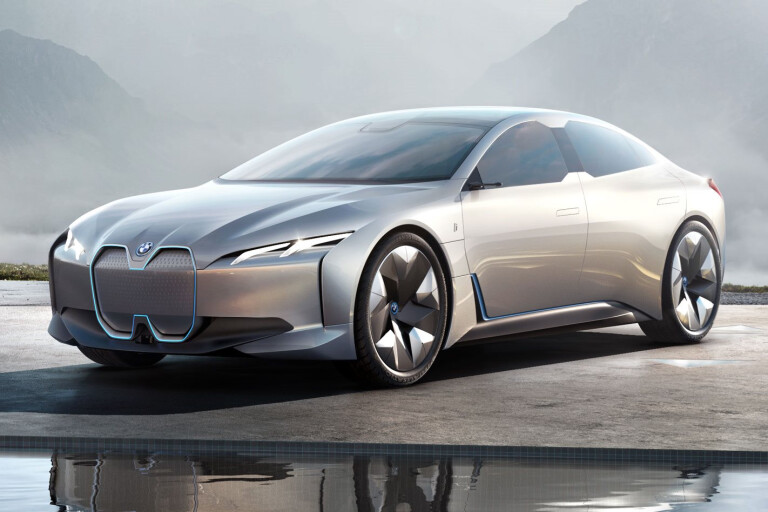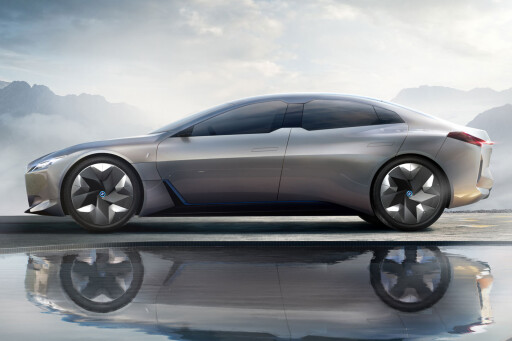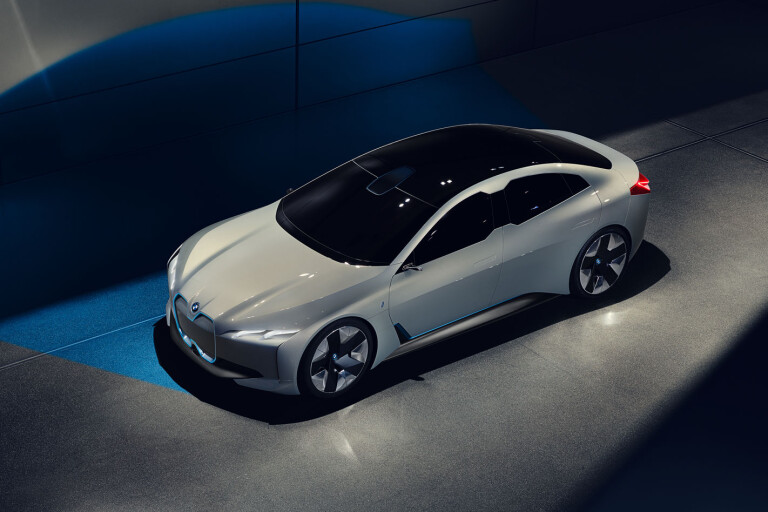
BMW laid down a marker at Frankfurt with its i Vision Dynamics four-door coupe EV, paving the way for a range that will comprise of 12 pure electric vehicles within the next seven years and another 25 with electrified drive systems.
The third pure EV in the Bavarian company’s portfolio, the i Vision Dynamics slots between the i3 city car and the i8 sports model, bringing a new design direction to Munich’s wares.
The car features a range of 600km, a top speed of more than 200km/h, and a 0-100km/h acceleration of four seconds. So while it’s not about to embarrass a Tesla Model S P100D at the lights, it’s certainly no sluggard.

“With the i3 and i8 we have designed a revolutionary city car and a revolutionary sports car,” says Adrian van Hooydonk, Senior Vice President BMW Group Design. “And now the BMW i Vision Dynamics is combining electric mobility with the core values of BMW: dynamism and elegance. We are therefore demonstrating how the product range and the design language of BMW i can be evolved further into other concepts.”
The vehicle is certainly distinctive, with a flowing roofline, full glass roof from windscreen to bootlid, and distinctive notched B-pillars, although the treatment of the traditional BMW kidney grille has divided opinion. The grille now features underlying sensors that are claimed to turn the kidneys into an “intelligence surface”. The headlights reprise the iconic four-eyed front end but now feature two freestanding LED elements on each side of the car’s heavily sculpted nose.

Expected to become the production i5, the i Vision Dynamics marks a not-so subtle shift in the design and philosophical direction of the new product. "Electro-mobility is the new normal for us," said Klaus Fröhlich, BMW’s research and development boss. “The i model we have planned for launch in 2021 will incorporate our fifth-generation battery electric system – a step that will take us to the next level.”
BMW chairman Harald Krüger described the i Vision Dynamics as a “significant milestone in BMW’s roadmap for e-mobility”. Stressing the desire to develop a workable case for production, he added, “It’s a vision we want to realise in the foreseeable future."




COMMENTS